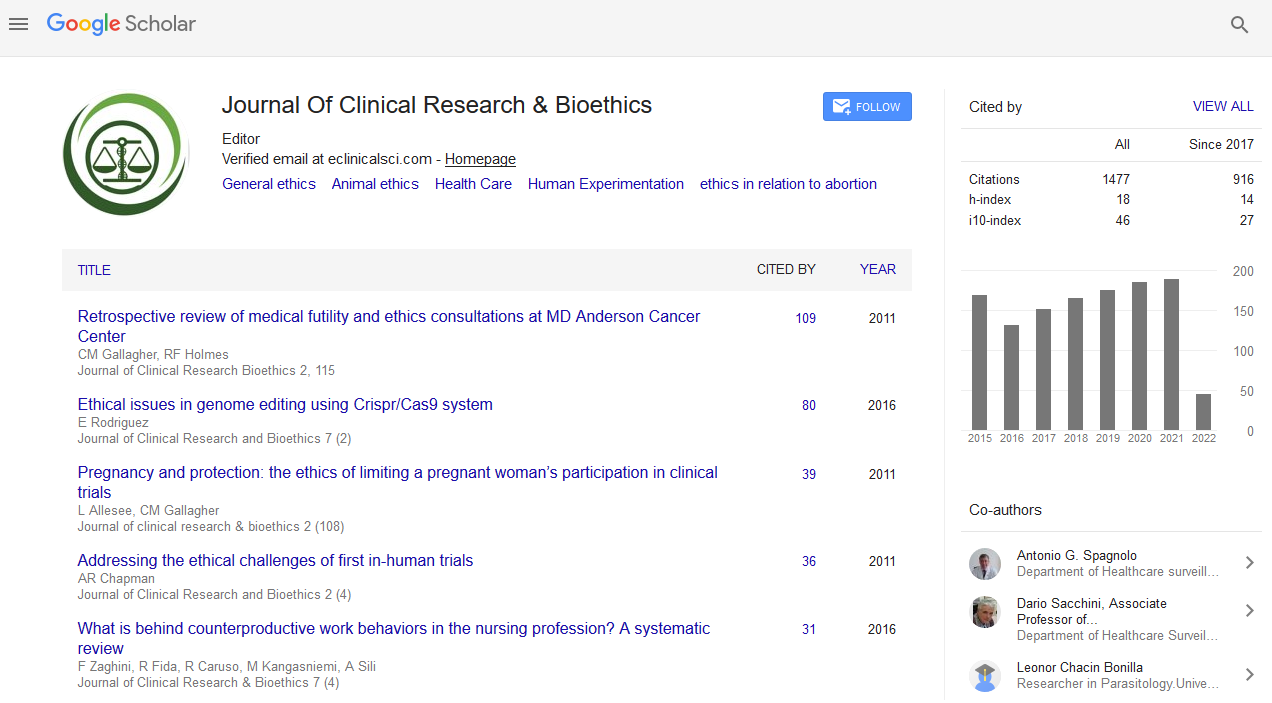PMC/PubMed Indexed Articles
Indexed In
- Open J Gate
- Genamics JournalSeek
- JournalTOCs
- RefSeek
- Hamdard University
- EBSCO A-Z
- OCLC- WorldCat
- Publons
- Geneva Foundation for Medical Education and Research
- Google Scholar
Useful Links
Share This Page
Journal Flyer

Open Access Journals
- Agri and Aquaculture
- Biochemistry
- Bioinformatics & Systems Biology
- Business & Management
- Chemistry
- Clinical Sciences
- Engineering
- Food & Nutrition
- General Science
- Genetics & Molecular Biology
- Immunology & Microbiology
- Medical Sciences
- Neuroscience & Psychology
- Nursing & Health Care
- Pharmaceutical Sciences
Effects of low level laser (Diode- 830nm) therapy on Human Bone Regeneration
3rd International Conference on Advanced Clinical Research and Clinical Trials
September 20-21, 2017 Dublin, Ireland
Mohammad Nazrul Islam
Shaheed Suhrawardy Medical College and Hospital, Bangladesh
Posters & Accepted Abstracts: J Clin Res Bioeth
Abstract:
Objective: Laser (semiconductor diode, Ga-Al-As, 830nm) is effective in human bone regeneration, i.e. it enhances bone fracture healing. Background Data: Tissue healing is a complex process that involves both local and systemic responses, and the healing process of bone is much slower than that of soft tissues which is a great challenge of medical science. The use of laser therapy (LLLT) for wound /bone healing has been shown to be effective in modulating both local and systemic response by enhancing- cellular & mitochondrial ion exchange, bone mineralization, nitric oxide formation, lymphatic circulation, osteoblast proliferation, effects on osteoblast gene expression, osteoclast inhibition (prevents bone mineral resorption) and by bone engraftment on synthetic materials. Methods: 40 (twenty in laser & twenty in control group) otherwise healthy men and women with, closed appendicular bone fracture (radius/ ulna, or femur / tibial shaft /clavicle / meta carpal /meta-tarsal) was enrolled for fracture management by laser therapy adjunctive to regular management, and was determined by clinical and radiological findings (X-ray)/at 2nd , 3rd, 4th and 6th week post fracture. Assessment included fracture line/margins, fracture gap, external callus appearance, callus-tocortex ratio, bridging, and radiologic union as well as clinical assessment of the fracture- compliance of patient, and onwards follow-up of patients, in comparison to controlled group. Results: Early significant bone regeneration /callus formation achieved by early application of low level laser therapy (Ga-Al- As, 830 nm) on human fractured long (appendicular) bone. Conclusions: Treatment with 830 nm diode laser has substantially reduced the fracture healing time as well as improved the quality/quantity of callus formation of the patient, thus enhancing fracture healing. Laser biostimulative effects on bone could be a new dimension for bone regeneration which significantly reduce healing period, lessen cost of treatment, and enhance patient compliance in medical science.


